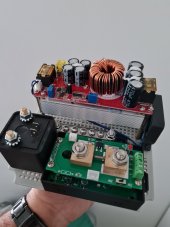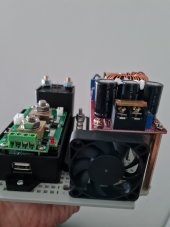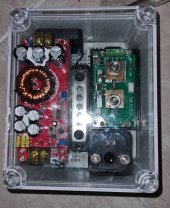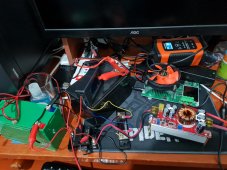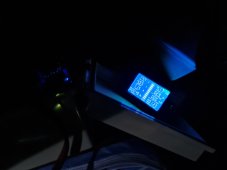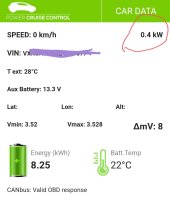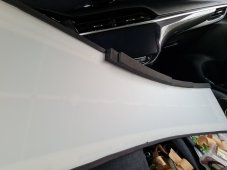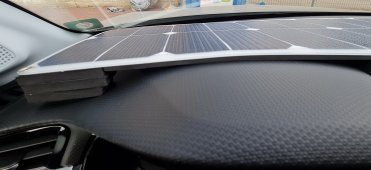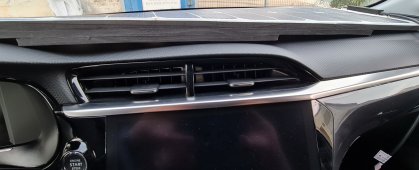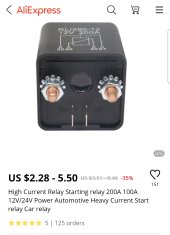So now I started placing thing inside a project/junction box.
This will go in my glovebox, as I have nice access to the car's fusebox from there, where I will tap into the 12v system.
The items that are in this box are:
- DC-DC boost converter.
- 12v automotive relay
- Ground bus bar
- Juntek wireless shunt (VAT 1050)
The relay will be turn on by the ignition of the car, and will control the input to the DC-DC converter. Meaning that only when the car is on, it will supply power to the 12v system of the EV.
The reason I'm using a relay and not a permanent connection (from the Lifepo4 buffer battery) is because I don't want to overcharge the existing 12v battery (which is currently SLA, but I have future plans to swap it for Lifepo4 too).
Also, I would rather have the buffer battery charge as much as possible while the car is parked, so I don't want to drain it just for keeping the 12v SLA battery topped-up (self discharge).
If I were to have alot of solar power, I may have chosen otherwise. Maybe when I swap the 12v for Lifepo4, I will change this.
The relay is a pretty massive 200A automotive relay, which is certainly overkill. I am using this one because a 40A one that I order from Aliexpress had pretty thin connectors, and when tested with only 14amps, it heated up alot.
I will be using the Juntek shunt (50A) on the output of the DC-DC boost converter, so that I will be able to see in real-time how much power is being supplied to the 12v system.
I have another 100A Juntek shunt, which I plan to use on the buffer battery side, to monitor the battery. What is nice about these wireless Juntek shunts is that you can use many shunts with the same wireless display. The shunts are addressable, so you can just choose which one to monitor on the display.
I haven't tested this feature yet, but I have seen this online in reviews and so it should work fine.
Yes, I know that all this is overkill for this experiment (and adds up to the total costs) but: 1. I am a data freak 2. Good monitoring will help me understand how efficient and effective my setup is.
As for the DC-DC converter, it will have a permanent connection on the output side to the car's 12v system (always on, not relayed).
This is due to the nature of DC-DC boost converters: If they have no load on them when they are powered up, there will be a high voltage on the output side. This could easily fry my car's 12v system. Therefore there will always be load/connection on the output side, and only the input side will be relayed.
I took the fan from underneath the DC-DC heat sink, and mounted it vertically.
I will be drilling/cutting holes in the box to allow for airflow and heat dissipation.
In this 1800w model of the DC-DC, the fan comes on only when its hot. On a 1200w model I got, the fan is always on, and is not controled by temperature.
There is some parasitic draw from the DC-DC on the output side if it's not powered (I think mainly due to some capacitors and an LED). But it's only a few miliamps, so it's forgivable.
Same goes for the Juntek shunt connected to the output.
But I think it's negligible, and prefer it this way rather than take the risk of damaging the car's 12v system (as explained above).
The bus bar is for connecting all grounds (relay, input and output).
Here are some pics after mounting the components on this nice project box which I got with a matching bottom plate.
This is before wiring, because it will probably get a bit messy after that

I am also waiting to receive some good tin-plated copper lugs, and a hydraulic crimper so the wiring phase will have to wait.
